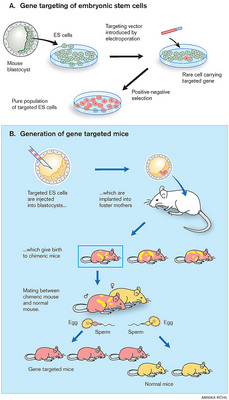Mario R. Capecchi, Martin J. Evans and Oliver Smithies revolutionized the power to "knock out" individual genes, which has allowed pathologists to better understand diseases such as cancer, heart disease, diabetes and cystic fibrosis for close to 20 years.
By isolating embryonic stem cells, Evans discovered how to introduce DNA changes into mothers and create genetically modified mouse offspring.
Capecchi and Smithies, in turn, figured out how to combine certain molecules and target specific genes for "knockout mice."
To date, over 10,000 mouse genes have been isolated; that's roughly half the entire genome of the species, with the rest targeted for the very near future. Stay tuned to PopularMechanics.com to meet more Nobel Prize winners for 2007.

|
| ©Annika Rohl |
| How it works: gene targeting |
In other news:
Semi-identical twins discovered - "Chimeras"
Now scientists create a sheep that's 15% human



Comment: Surely, the new and improved human race is not far off...
Have a look at the picture to see how chimeras are used as an intermediate stage to the production of the new and improved model.
Still think that chimeras are quite normal and harmless...?